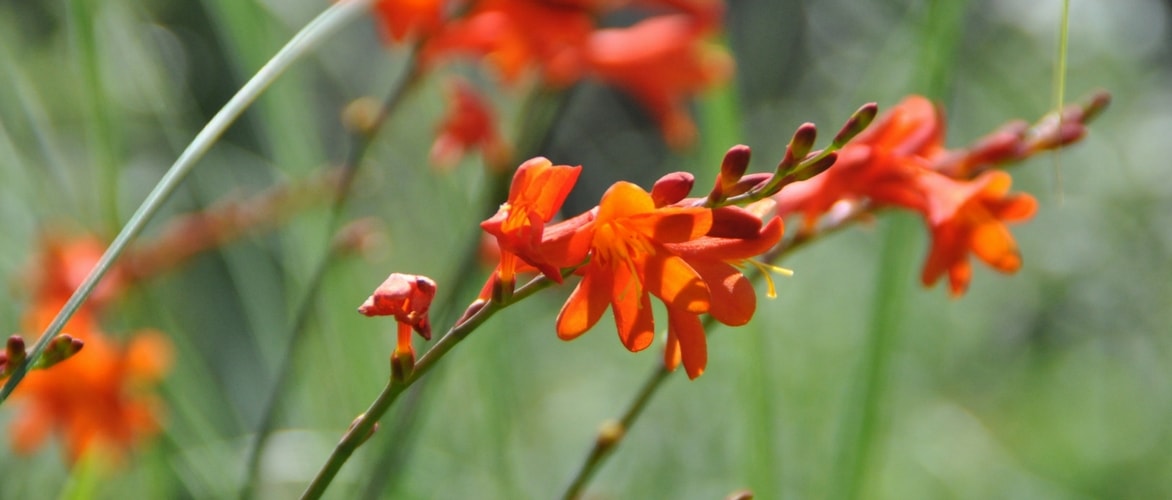
Crocosmia or montbretia: 9 ideas for associations
for a garden with vibrant colours
Contents
With its vibrant colours, crocosmia warms up the garden by adding a touch of exoticism. The yellow-orange-red tones give a warm and lively appearance to the flowerbeds! These are bright, cheerful colours that are very luminous. Crocosmia can thus be used to create a splash of colour that immediately catches the eye and guides visitors through the garden. The red varieties, such as ‘Lucifer’, are particularly suited to large gardens, as this is a colour that reduces distances. We recommend planting them in groups of 10 to 15 bulbs for a better visual effect and to enhance this “splash of colour” effect.
The vivid colours of crocosmia make it easy to integrate into a flowerbed with an exotic look. Plant it alongside plants with exuberant foliage and very colourful flowers (Cannas, Castor beans, etc.). You can also play with colours by placing it near plants with warm tones or by opting for complementary colours. Thus, the orange-flowered varieties, such as Crocosmia masoniorum, pair very well with the blue flowering of Agapanthus or certain salvias.
Even when not in bloom, crocosmia is decorative due to its bold, upright green foliage. The fine, erect leaves provide a lot of graphic appeal, allowing for a beautiful contrast effect alongside plants with stricter forms, such as trimmed boxwoods or conifers. You can thus play with shapes to add volume and movement to a flat or overly strict flowerbed.
In a mixed border or English-style bed
With its vibrant colours and upright habit, crocosmia is a very good young plant for borders. It allows for the creation of mixed-borders, emblematic of English gardens. Pair it with perennials and annual plants with colourful flowering, such as Cosmos, Dahlias, or Rudbeckias. You can place a few bushes at the back of the border to add a bit more depth to the overall arrangement.
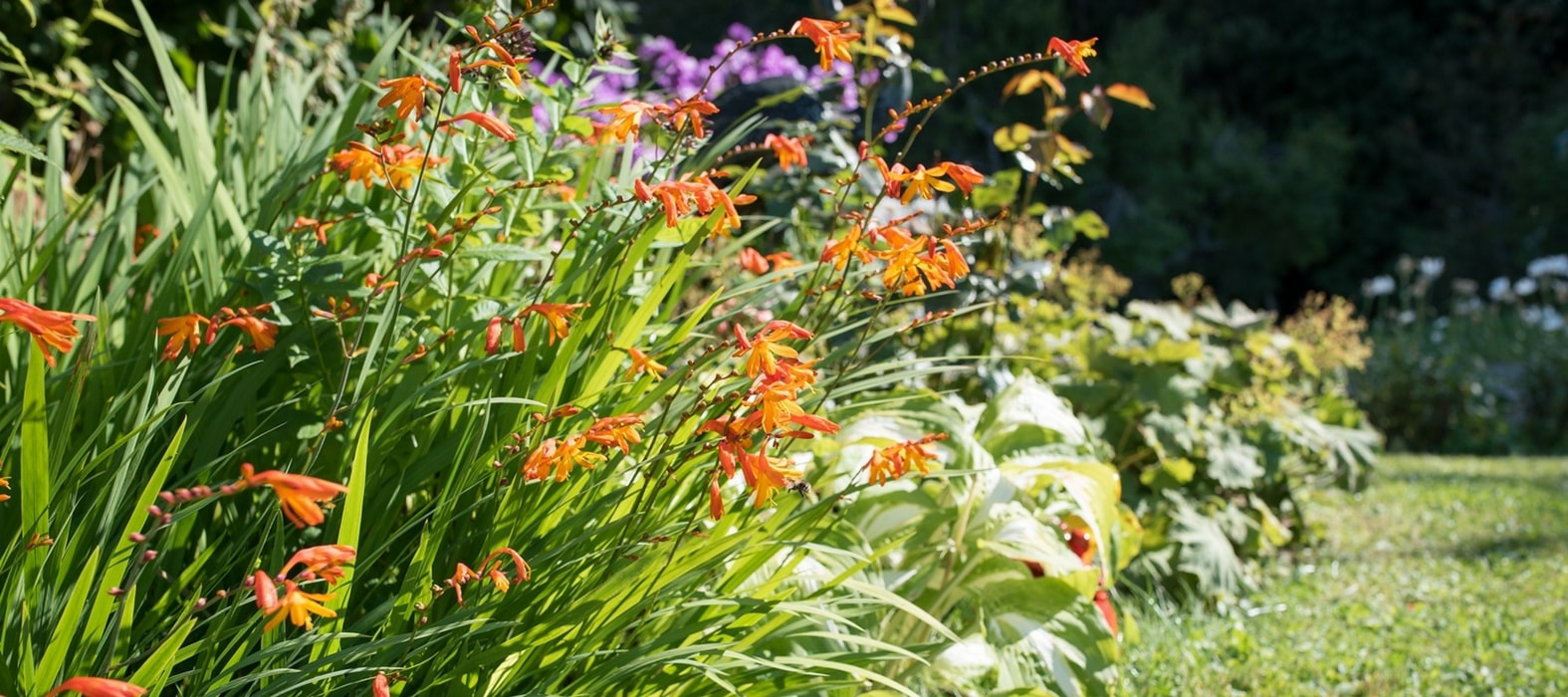
Discover other Crocosmia
View all →Available in 0 sizes
Available in 2 sizes
Available in 3 sizes
Available in 1 sizes
Available in 1 sizes
Available in 1 sizes
Available in 3 sizes
Available in 2 sizes
Available in 1 sizes
In an exotic bed
Create an exotic bed by choosing plants with vibrant flowerings (warm tones) and original or exuberant foliage. You will achieve a very lush bed, where crocosmia will easily find its place! Choose a sheltered location from the wind, facing south, and with rather well-draining soil. At the back of the bed, place some hardy palms, such as Trachycarpus fortunei or Chamaerops humilis. In front of them, arrange Cannas accompanied by a dozen bulbs of Crocosmia. At the very front, install shorter plants, such as Santolines, Agaves, or Aspidistras. You can also take advantage of the purple and very exotic foliage of Phormiums and Ricins, which will harmonise beautifully with the flowering of Crocosmia!

Trachycarpus fortunei, Phormium ‘Pink Panther’, Crocosmia masoniorum, Agave americana ‘Mediopicta’
To draw the eye to a point in the garden
Use the Crocosmia ‘Lucifer’ to create a splash of intense red that can be seen from afar and guides the visitor. This is the ideal colour for large gardens, as red reduces the perception of distance. You can pair it with some plants in purple tones. Thus, plant about ten bulbs of Crocosmia ‘Lucifer’ alongside the Dahlia ‘Purple Flame’ or Phormium ‘Purpureum’. Add some clumps of grasses (Pennisetum, Stipa…) to lighten the overall effect.
Red is a colour to be handled with care if you have a small garden. Being very bright, it can overwhelm and compress the space. Use it sparingly, or mix it with other more neutral colours (brown, white…).

Phormium tenax ‘Purpureum’, Crocosmia ‘Lucifer’, Dahlia ‘Purple Flame’, Pennisetum setaceum ‘Fireworks’
In a bed of warm colours
Combine crocosmias with other plants in shades of yellow, orange, and red to create a fire-coloured bed.
Enjoy the yellow flowering of Coreopsis, the orange flowering of Asclepias tuberosa, or the red of Monardas. Gaillardes and Kniphofias are also plants that can be included in these flamboyant arrangements. Feel free to add plants with brown foliage, for example, by placing a few maples or cannas in the background. Plant some clumps of Pennisetum in dark tones on either side.

Coreopsis auriculata ‘Nana’, Crocosmia ‘Carmine Brillant’, Asclepias tuberosa, Canna ‘Durban’
To play with complementary colours
Orange-flowering varieties, such as ‘Emily McKenzie’, pair very well with blue, their complementary colour on the colour wheel. The orange colour adds depth and helps to warm up borders with cool tones. Plant blue asters, agapanthus, salvias, or echinops alongside them. You can create a stunning combination of Crocosmias, Agapanthus, and Grasses! The grasses and blue flowers will lighten the vibrant colours of the crocosmias.

Salvia patens ‘Royal Blue’, Crocosmia ‘Emily Mc Kenzie’, Agapanthus ‘Midnight Blue’, Pennisetum orientale
With plants in lighter tones
Crocosmia, with its vibrant colours, pairs well with white flowers or silver foliage, which adds more lightness to the flowerbed. The bright colours are softened by the silver foliage of Stachys byzantina, by the white and airy flowering of gypsophila, or by that of Cosmos ‘Purity’. Feel free to place a few clumps near your crocosmias.

Crocosmia ‘Emberglow’, Cosmos ‘Purity’, Crocosmia ‘Buttercup’, Stachys byzantina
To play with contrasts of shape
With strictly pruned plants, such as boxwood, the upright habit of crocosmia will create a lovely contrast. Its elongated leaves and airy flowering give it a graphic quality, adding volume and lightness to more formal beds. Similarly, the tallest varieties, such as ‘Lucifer’, will bring relief to a somewhat flat bed composed of low plants, such as Heucheras or Bergenias.
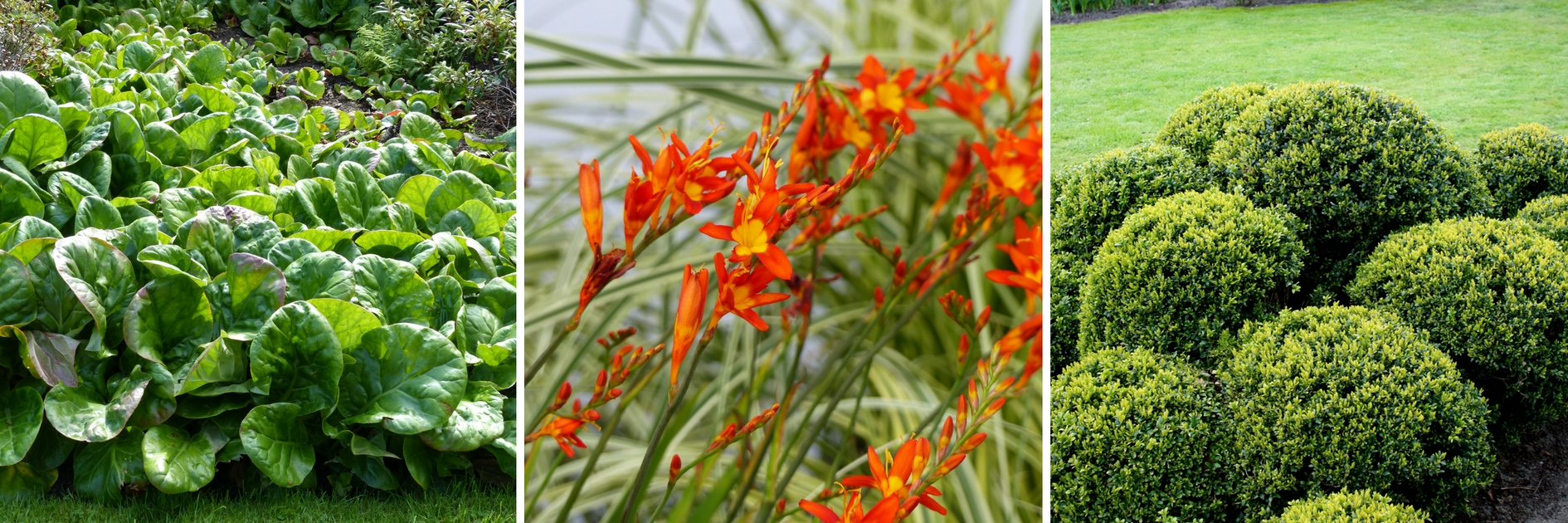
Crocosmia adds lightness to somewhat flat beds! (here with Bergenia ciliata and Buxus sempervirens)
At the edge of a terrace or at the foot of a wall
Showcase crocosmias by placing them in a terrace border, allowing you to fully enjoy their flowering during summer! Plant them in the ground or in a large pot, perhaps accompanied by perennials and grasses. You can place this pot on the edge of a terrace and bring it indoors for winter under shelter or in an unheated conservatory to protect the plant from the cold. Crocosmias also dress the base of old stone walls beautifully. If they are south-facing, they will provide a warm and bright location for your crocosmias!
- Subscribe!
- Contents































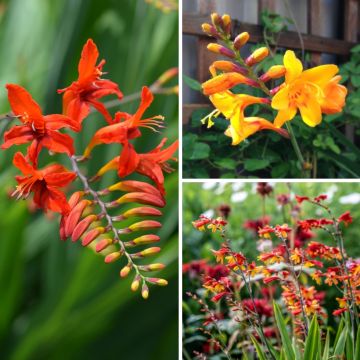

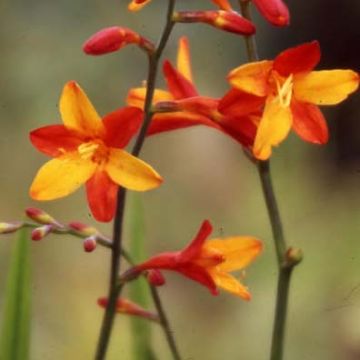

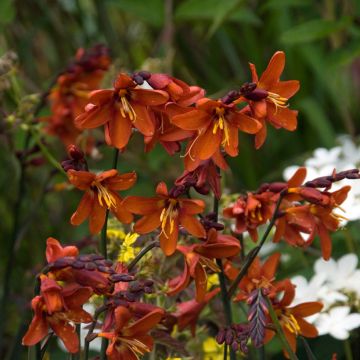
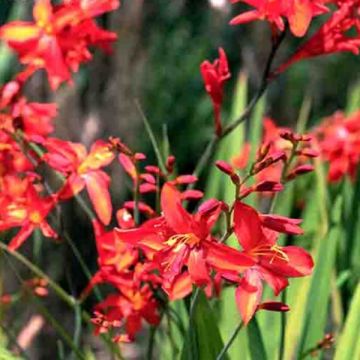
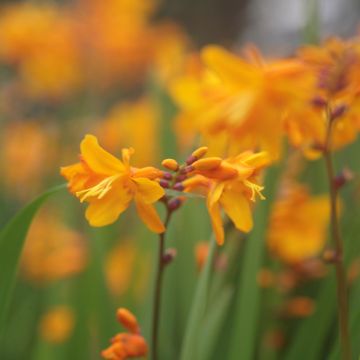
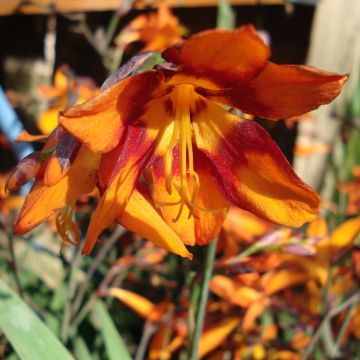
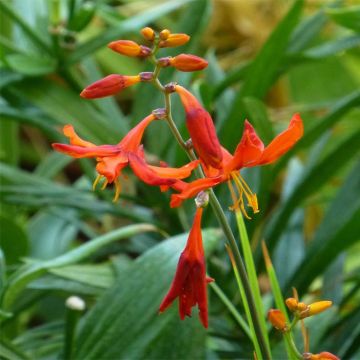
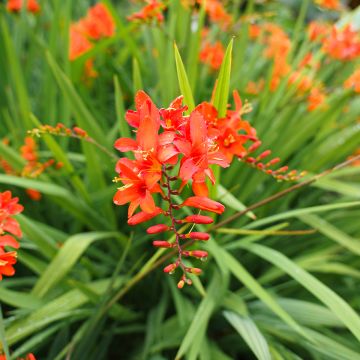
Comments